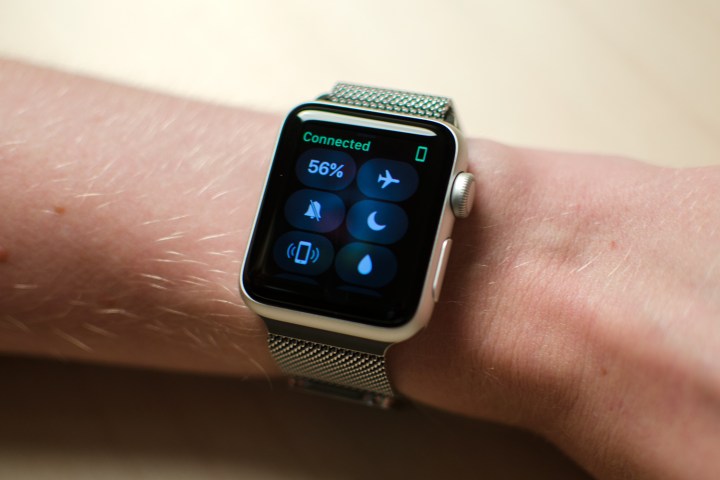
The filing “Charging apparatus for wearable electronic device” describes an external battery with “more cells” that will either partially or fully charge a paired Apple Watch. It transfers power using induction, a two-way design that uses an inductive coil to facilitate the flow of electricity — the same technique employed in the Magnetic Charging Cable that ships included with every Apple Watch.
When it comes to the battery’s placement, Apple proposes several solutions. It could fit under the watch’s body in order to protect its “sensitive internal components,” or made curved so it could fit around a watch band’s interior. Or it could be embedded directly into an Apple Watch band accessory.
Perhaps anticipating that such a battery could affect the watch’s suite of sensors and generate an uncomfortable degree of heat, Apple’s proposing mitigating measures. A translucent window would allow the passage of light from, say, the Watch’s heart rate sensor, and a series of sensors would limit the battery’s charge rates when the Watch was being worn.
Apple’s not the first to entertain the idea of an external watch battery. The Wipowerband, a polypropylene plastic band, packs a 250 mAh high-density rechargeable cell that attaches to the Apple Watch’s standard connector. The silicon Reserve Strap, meanwhile, slots a tiny inductive charger with a lithium polymer cell between your wrist and the watch.
Apple has tried to work around the Apple Watch’s power constraints in other ways, historically. The latest version of the Apple Watch’s operating system, watchOS 3.1, features battery optimizations, and the Apple Watch Series 2 was made slightly thicker than its predecessor in order to accommodate a larger battery.
In our review of the Apple Watch Series 2, we found it more than adequate for the average person. Moderate-to-light use got it through a day and a half, roughly, and sometimes a bit more. But we had to charge it most nights.
Apple says its watch offers “all day battery life” — up to 18 hours of normal use, which it defines as “90 time checks, 90 notifications, 45 minutes of app use and a 30-minute workout with music playback from Apple Watch via Bluetooth, over the course of 18 hours. That is certainly on par with the competition, but here is hoping the company engineers a better solution in the future.


